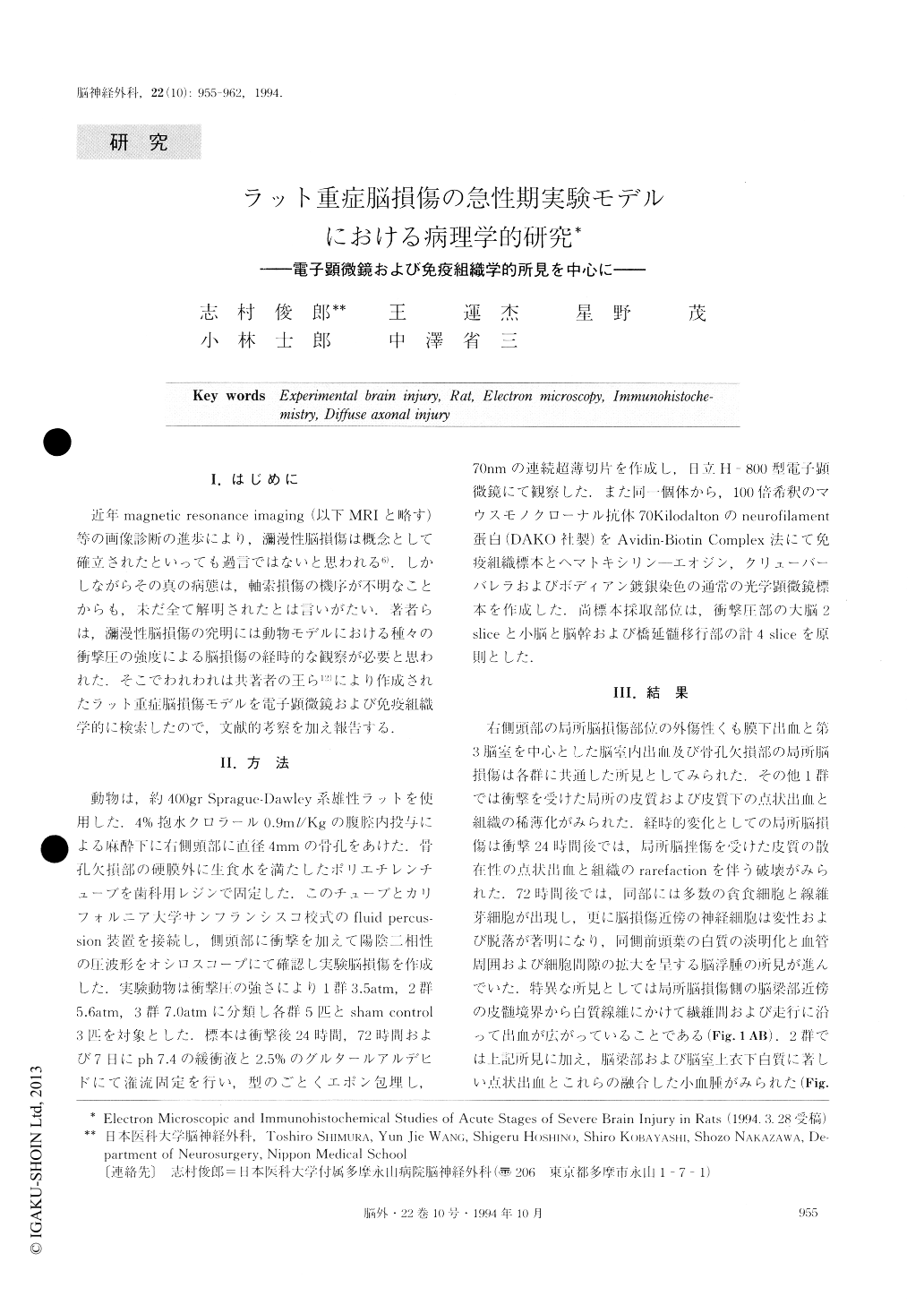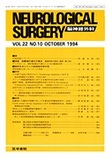Japanese
English
- 有料閲覧
- Abstract 文献概要
- 1ページ目 Look Inside
I.はじめに
近年magnetic resonance imaging(以下MRIと略す)等の画像診断の進歩により,瀰漫性脳損傷は概念として確立されたといっても過言ではないと思われる6).しかしながらその真の病態は,軸索損傷の機序が不明なことからも,未だ全て解明されたとは言いがたい.著者らは,瀰漫性脳損傷の究明には動物モデルにおける種々の衝撃圧の強度による脳損傷の経時的な観察が必要と思われた.そこでわれわれは共著者の王ら12)により作成されたラット重症脳損傷モデルを電子顕微鏡および免疫組織学的に検索したので,文献的考察を加え報告する.
Few morphological studies on fluid-percussion ex-perimental models using mechanically produced severe brain injury have been reported. This study was initi-ated to evaluate light and electron microscopic and im-munohistochemical findings in severe brain injury mod-els using rats.
The experimental rats and the methods used were as described for a fluid-percussion model. Fluid-percussior models of traumatic brain injury produce injury rapidly by injecting fluid volumes into the epidural space of the temporal lobe. We used 5 rats which sustained various degrees of injury by high (7.0 atm), medium (5.6 atm) and low (3.5 atm) magnitudes of impact and sham con- trol. The rats were sacrificed and perfused transcardial-ly with buffer solution followed by 2.5% glutaraldehyd at intervals of 24 hours, 3 days, and 7 days, and then were normal and sham control groups. In this immuno- histochemical study, monoclonal antibody to 70 kilodal- ton neurofilament subunit has been used in a standard Avidin-Biotin Complex Kit (DAKO).
Microscopic findings of the animals revealed sub-arachnoid hemorrhage, lateral Ⅲrd ventricular hemor-rhage, and rarefaction and petechial hemorrhage of the local contusional lesion. In the medium level injury, there was a marked petechial hemorrhage in the corpus callosum and subependymal area. In the high level in jury, there was marked edema in the white matter of the ipsi and contralateral cerebral hemisphere, and mul-tiple petechial hemorrhage in the brain stem and cere bellum. Microscopic findings in the corpus callosum, subependyma and brain stem in the vicinity of petec-hial hemorrhage revealed a large number of axonal swellings, but in these specimens only a few typical axonal retraction balls were seen using Boclian and im-munohistochemical stains.
Electron microscopic findings of the above mentioned specimens revealed enlarged club-like axons which were filled with floccular dense bodies, granular debris, vesicle mitochondria and increasing amounts of neuro-filaments. We observed different axonal changes (Lampert, 1967) in this study.
In conclusion, this experimental model seems to simulate local and diffuse shearing injury. This model produced various morphological characteristics of dif-fuse axonal injury.

Copyright © 1994, Igaku-Shoin Ltd. All rights reserved.


